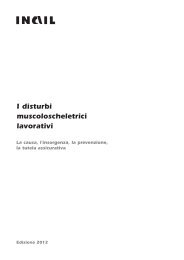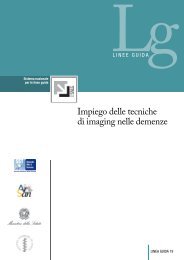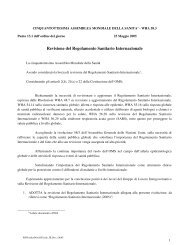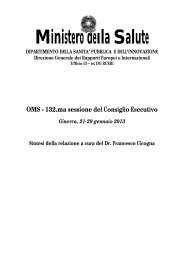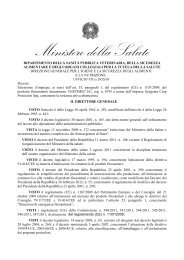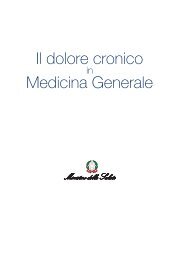hta_ knee intro.qxp - Ministero della Salute
hta_ knee intro.qxp - Ministero della Salute
hta_ knee intro.qxp - Ministero della Salute
Create successful ePaper yourself
Turn your PDF publications into a flip-book with our unique Google optimized e-Paper software.
new sequentially cross-linked polyethylene, minimally invasive TKR, computer-assisted or navigated<br />
TKR, and gender-specific designs.<br />
However, as in all the therapeutic interventions, surgeons should use the practice of evidence-based<br />
medicine to adopt those surgical techniques that have been proven safe and efficacious<br />
by long-term prospective outcome studies (Richmond, 2009). Unfortunately, the marketing strategies<br />
also play their role and may guide the choices of surgeons and hospitals.<br />
Minimally invasive procedures, are in general, considered very technically demanding.<br />
Computer navigation, that use precise identification systems of bony anatomic landmarks, may<br />
be used in combination with small incisions to allow the surgeon to obtain a better alignment of<br />
the prosthesis. Conversely, computer navigation requires a learning curve and is more expensive<br />
and time-consuming that the traditional surgery.<br />
Recently new prostheses designs are <strong>intro</strong>duced and marketed as “gender specific”. The rationale<br />
of these devices is based on the anatomic variations between men and women. To date, there<br />
is no evidence to support an advantage of these gender-specific devices for women. When the<br />
literature for traditional TKR is reviewed for outcomes based on sex, the risk of failure is not higher<br />
in women than in men (Rankin, 2008).<br />
77



